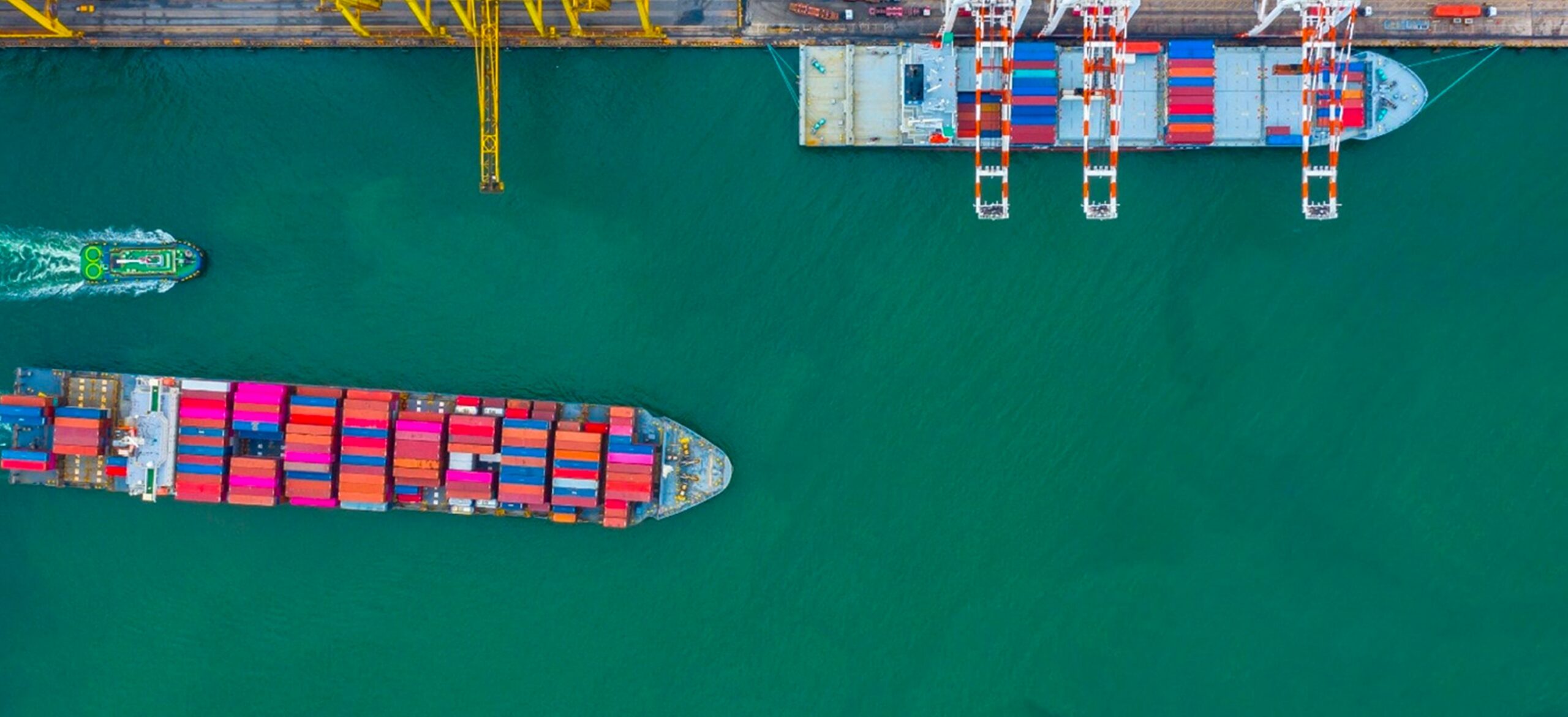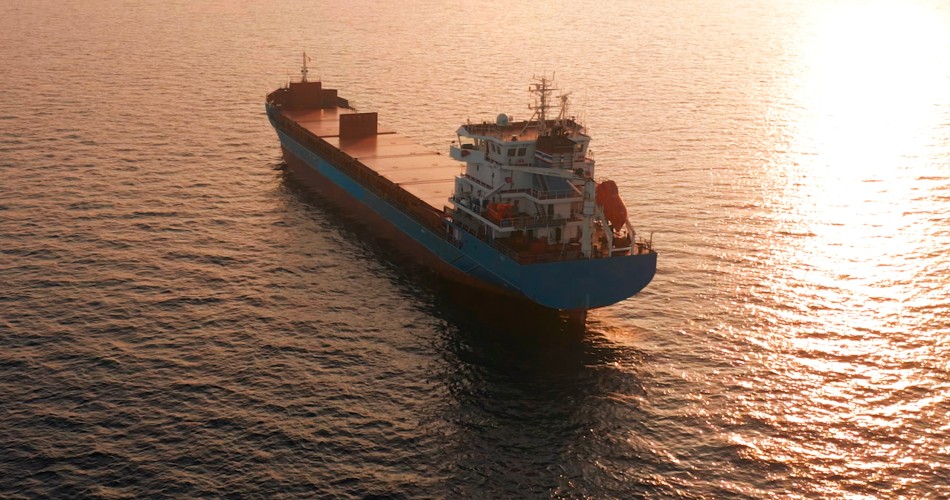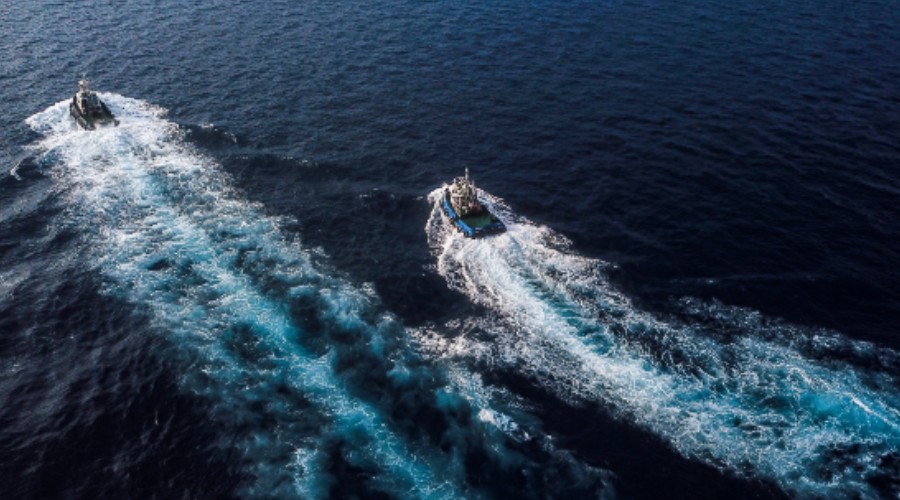Maritime Emissions reduction

Eminox develops pioneering maritime emissions solutions for the marine industry to improve air quality. Working with legislative bodies and partners across sectors including commercial workboat, fishing and inland waterways transportation; for both OEM (Original Equipment Manufacturer) and Retrofit solutions we ensure route to compliance is straightforward.
Our flexible engineering capabilities ensures we develop your concept all the way through to production. Therefore, providing a flexible, scalable marine exhaust aftertreatment system to suit your range of marine applications with power outputs from 130kW to 7MW, including those with challenging space envelopes.
Whether you require a high or medium speed solution, Eminox has an exhaust aftertreatment system to suit you. Using our decades of knowledge and experience in designing modular solutions, we understand the importance of delivering a solution which achieves compliance to the latest emissions regulations.
Eminox develops pioneering maritime emissions solutions for the marine industry to improve air quality. Working with legislative bodies and partners across sectors including commercial workboat, fishing, and inland waterways transportation; for both OEM (Original Equipment Manufacturer) and Retrofit solutions, we ensure the route to compliance is straightforward. To find out more details, please read our FAQs below.

OEM Tier 1 and Tier 2 solutions
Eminox marine emissions reduction technologies offer marine vessel and stationary power manufacturers and operators’ full compliance to legislative standards, such as, IMO Tier III, EU Stage V Inland Waterways, ULEV and EPA Tier 4 regulations, covering both inland and sea going vessels.
Our flexible, modular, and scalable marine exhaust aftertreatment systems for high and medium speed engines (from 156kW to 7MW) provide you with a solution to reduce lead times, development, approval and costs.
There are two main options in delivering an exhaust aftertreatment system to suit different vessel types. Either select a product from our standard range to suit the engine power output or alternatively, we can develop a solution specific to your project requirements, from concept development to full manufacture. We will carry out engineering evaluation, modelling, prototyping, validation, and verification in our 7,000m2 facility in the UK.
Our research and development into new maritime emissions technologies to support dual and alternative fuel is hugely significant in supporting the marine sector on its continued journey to maritime decarbonisation.

Upgrading marine applications
Eminox retrofit solutions upgrade your existing marine exhaust aftertreatment system to ensure older systems comply with IMO Tier III, Stage V Inland Waterways or EPA emissions legislation.
Our proven DPF and SCR technologies can be installed into existing applications to achieve near zero emissions of particulate matter (PM), nitrogen oxides (NOx, NO2) carbon monoxide (CO) and hydrocarbons (HC) to support maritime decarbonisation initiatives.
Incorporating the Eminox control unit and all sensors throughout the system, our diesel particulate filter (DPF) unit monitors exhaust flow under different operating conditions to maximise service interval time.
Our innovative urea dosing and control system (UDS) is designed to minimise the package space required in your application, whilst the advanced mixing techniques guarantees a compact system. The installation of the diesel oxidation catalyst (DOC) and DPF together with high performance Selective Catalytic Reduction (SCR technology) and pipe work are commissioned and certified for your application, providing a complete optimised solution.
FREQUENTLY ASKED QUESTIONS
Here you’ll find the most common questions asked about exhaust aftertreatment systems and how they positively impact on marine emissions reduction
Eminox has exhaust aftertreatment systems to reduce maritime emissions, which meet IMO Tier III legislation regarding NOx (nitrogen oxides) reduction and Stage V Inland Waterways (IWW) legislation regarding both NOx and PM (particulate matter) reduction.
The IMO Tier III system comprises of an SCR (selective catalytic reduction) system to remove NOx, whereas the Stage V IWW system combines the SCR technology for NOx reduction with a DOC (diesel oxidation catalyst) and DPF (diesel particulate filter) to remove PM.
The Eminox range of exhaust aftertreatment systems is already developed using a standard range of components, providing a modular and scalable platform product range. This means customers with one vessel, or a fleet of different vessels can choose a standard product to suit their individual requirements. However, we also develop solutions specific to your maritime decarbonisation project requirements.
Eminox can provide all service requirements and replacement parts based on the operating hours of each application, with all serviceable components available to maintain the system.
Yes, they do. Our systems are IMO Tier III, EPA Tier 4 regulations and Stage V Inland Waterways (IWW) compliant covering both inland and sea going vessels.
IMO Tier III exhaust aftertreatment system reduces NOx (nitrogen oxides) using SCR technology whilst our Stage V Inland Waterways (IWW) system has a DOC (diesel oxidation catalyst) and DPF (diesel particulate filter) added which removes PM (particulate matter) known as soot, in addition to NOx.
Eminox can supply exhaust aftertreatment systems for new vessel builds or to those already in operation which require an upgrade; both options enable affordable compliance to the latest maritime emissions regulations. Whether SCR only for IMO Tier III or DOC+DPF combined with SCR for Stage V IWW compliance, both solutions also help to support the overarching maritime decarbonisation targets set by IMO to reduce NOx emissions by 50% before 2050.
The flexible, scalable, modular design of our exhaust aftertreatment systems allows us to tailor solutions for all vessel types and space envelopes to upgrade systems to meet required marine emissions legislation.
Our systems are adaptable to maximise space and efficiencies, and our design and mixing expertise achieve utmost efficiency of exhaust aftertreatment systems.
However, it is important to understand that whilst we develop our systems to be compact and as small as possible, they are sized to suit the engine exhaust gas flow and respect the back pressure and NOx (nitrogen oxides) conversion requirements.
The solutions help to achieve near zero emissions of PM (particulate matter), NOx, carbon monoxide (CO) and hydrocarbons (HC) to support maritime decarbonisation.
We can supply solutions to suit various size vessels comprising engine powers from 250kW to 3MW.
High speed exhaust aftertreatment systems typically go up to 700kW engine power, whilst our medium speed systems go up to 3MW. However, it is possible to combine two high speed systems for limited space envelopes and split the gas flow 50/50 to deliver a c1.2MW solution for high-speed engines.
Vessel age is not prohibitive to the successful refit or upgrade of a marine emissions reduction system however, they should be fitted to engines that have been well maintained. Please note, exhaust aftertreatment systems will clean up the exhaust gas and consequently can mask old, worn engines which omit high emissions. It is therefore important, for good service life, to make sure the engine is well maintained.
There is a possibility that some vessels can receive exemptions. Currently, vessels must be surveyed by class societies, every five years in to ensure compliance to maritime regulations. However, this has now been reduced to the survey being undertaken every three years and now includes much more stringent emissions regulations to support maritime decarbonisation.
This means there will be fewer and fewer exemptions given to existing vessels.
The internal combustion engine (ICE) has longevity. Even when diesel is not the preferred fuel choice ICE can run on green diesel (manufactured through carbon capture, meaning it is a net zero emissions fuel, and other renewable and green fuels such as methanol, hydrogen and ammonia.
Exhaust aftertreatment systems will still be required to remove NOx (nitrogen oxides) emissions from vessels powered by an ICE using these alternative fuels. This means the DOC (diesel oxidation catalyst) and DPF (diesel particulate filter) pertaining to diesel systems may no longer be necessary, however, the SCR (selective catalytic reduction) technology will still be required to reduce alternative fuel emissions.
Our ongoing research and development into new maritime emissions technologies to support dual and alternative fuel is hugely significant in supporting the industry’s different sectors on the continued journey to maritime decarbonisation.
Classification societies are recognised advisors to the maritime industry. They are responsible for enhancing safety, quality, energy efficiency and environmental performance for all vessel types, globally.
All Eminox exhaust aftertreatment systems will have class approval, from recognised societies such as DNV (Det Norske Veritas), Bureau Veritas and Lloyds Register, giving our customers reassurance that the system will promptly receive class approval during the vessel sign-off.
Consequently, both our IMO Tier III exhaust aftertreatment systems and our Stage V Inland Waterways (IWW) systems for marine emissions reduction will be certified to comply with the rules set out by MARPOL (International Convention for the Prevention of Pollution from ships).
As part of the certification process Eminox will provide customers with the type approval number, which forms part of the full vessel class society survey. This ensures a vessel fitted with the latest emissions reduction technology from Eminox will comply to the maritime emissions regulations such as IMO Tier III and Stage V Inland Waterways (IWW).